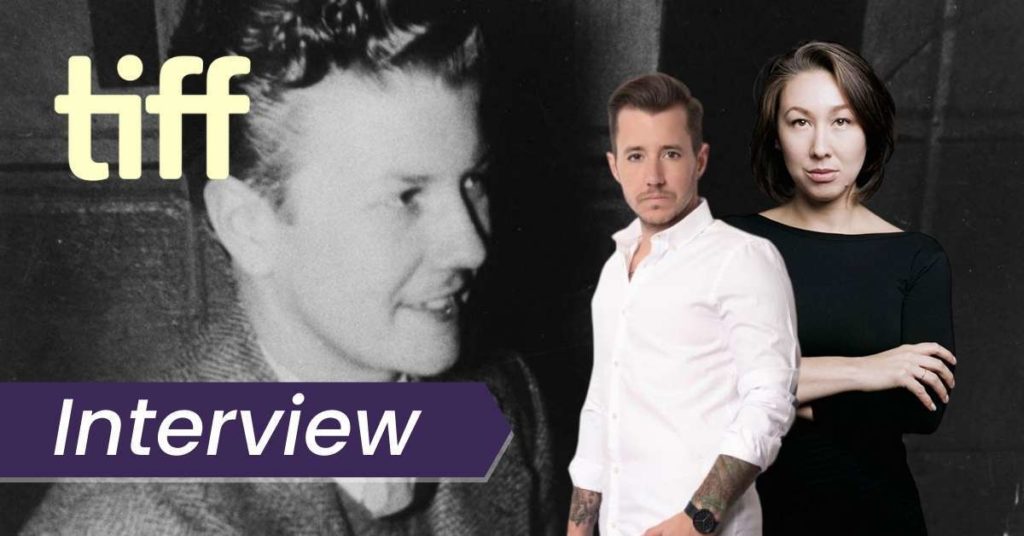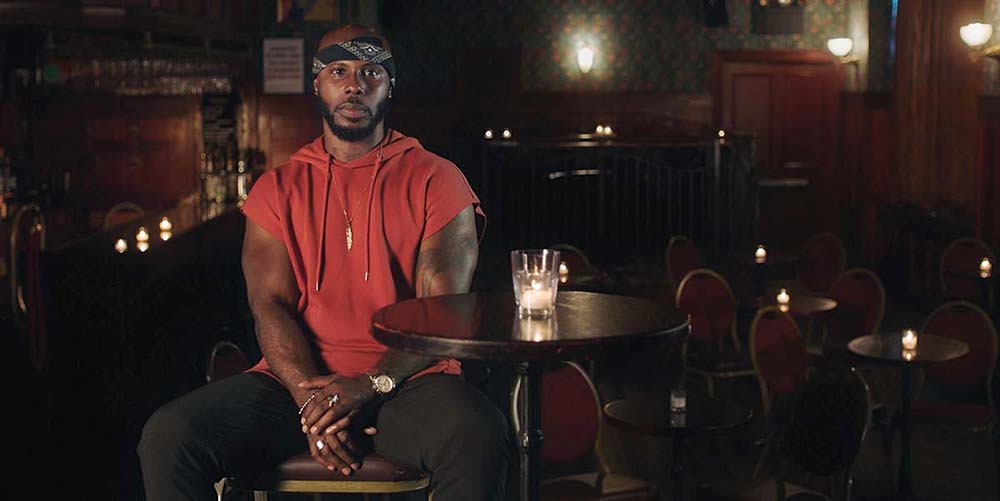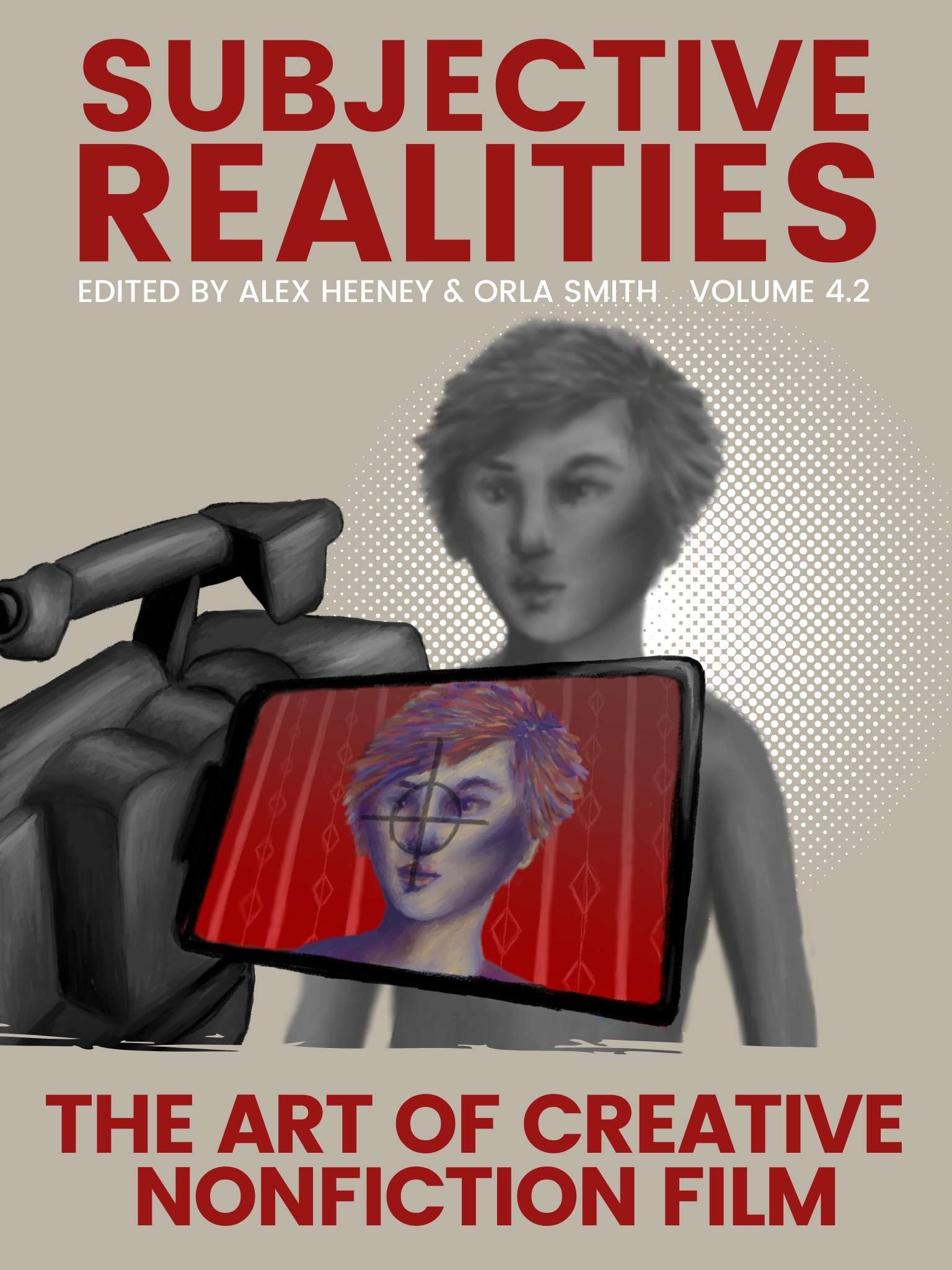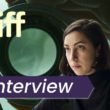Co-directors Aisling Chin-Yee and Chase Joynt on how their documentary No Ordinary Man corrects the narrative around Billy Tipton, a transgender jazz musician whose life story was distorted by the media after his death. The film is now on VOD in Canada and will be released in the US later this year. Keep up to date with our TIFF ’20 coverage.
Listen to our podcast on reclaiming history and No Ordinary Man and John Ware Reclaimed

Discover one film you didn’t know you needed:
Not in the zeitgeist. Not pushed by streamers.
But still easy to find — and worth sitting with.
And a guide to help you do just that.
How do you shoulder the responsibility of creating the first moving image representations of a person who is no longer with us? What’s more, in the case of trans jazz musician Billy Tipton, how do you make a documentary about a figure whose legacy has been distorted by mainstream media for decades after their death? It’s a responsibility that co-directors Aisling Chin-Yee and Chase Joynt didn’t take lightly.
The story No Ordinary Man tells is one of lost transgender history that’s finally being reclaimed. The film’s subject is Billy Tipton, an influential jazz musician who worked between the 1930s and 1970s. It wasn’t until 1989, when Tipton died in the arms of his son, Billy Jr., that Tipton’s family and the public discovered that he was assigned female at birth. After his death, Tipton’s story was twisted: Tipton was unequivocally a trans man, but the cis-dominated media presented him as a woman who dressed as a man in order to get a foot in the door in the music industry. Even the most cited text about Tipton’s life, Suits Me: The Double Life of Billy Tipton by Dianne Middlebrook, framed his story around this harmful narrative.
In Chin-Yee and Joynt’s hands, No Ordinary Man is no ordinary biographical documentary. They go way beyond the standard archival footage and talking head interview approach to tell Tipton’s story. Joynt explained that “understanding that there was no moving image footage of Tipton was both a restriction and an opportunity for us to immediately start thinking creatively beyond the bounds of reenactment and other ways that biopics tend to be created.” The film features photos and audio recordings of Tipton, as well as his music, and his life story is told through the words of talking-head experts, most of whom are trans. But another huge part of the film are “auditions” where the filmmakers invite a whole host of diverse transmasculine actors to act out and then dissect scripted scenes from Tipton’s life.
It’s in these audition scenes where No Ordinary Man truly comes to life. In Chin-Yee’s words, “We’re not Billy, and he didn’t leave a record to tell us what he was thinking or feeling in the specific moments we’re curious about.” So instead of telling one version of Tipton’s story, the filmmakers allow each actor to tell their own, different version, all filtered through the transmasculine perspective. We feel how the legacy of transgender historical figures reverberates through to today in the conversations the filmmakers have with these actors, as well as the conversations the actors have with each other in the waiting room, which are also included in the film.
The final piece of the emotional puzzle is Billy Jr., Tipton’s son. Through intimate vignettes of his home life where he discusses memories of his father, we feel how harmful the media’s distortion of Tipton’s life was through the testimonial of someone who was directly affected by it. We also see the healing process in action. Billy Jr. has always maintained that his father was a man, even throughout the traumatising media circus surrounding his father’s death, and even though he didn’t have the language to think of Tipton as ‘transgender’. The conversations he has on screen with activist Jamison Green and co-director Chase Joynt mark the first times Billy Jr. has ever talked to trans people about his father’s legacy. He’s visibly moved to hear how much his father’s story means to transmasculine people today, as if he’s finally achieving some sort of closure.
I spoke to Chin-Yee and Joynt over Zoom before the online premiere of No Ordinary Man at TIFF. They discussed the weight of responsibility that came with telling Billy Tipton’s story and how they jazzed up the traditional biographical documentary formula.
Seventh Row (7R): How did you both get involved with No Ordinary Man?
Aisling Chin-Yee: Our producer Sarah Spring wanted to look into making a film about Billy, so then [co-writer] Amos Mac and I came on board to write this project. Amos is a wonderful transmasculine artist and writer based out of Hollywood. We started to do interviews and research Billy’s life. We went through the archives at Stanford University. Then Chase joined our creative team as [a co-director]. The three of us moulded this project.
Chase Joynt: As a trans man interested in trans history, I’ve always been interested in who controls the story. The story of Billy Tipton’s life has always been controlled by the mainstream media. This project was an incredible opportunity to approach Tipton’s life from a trans perspective.
7R: How did you decide who you’d feature on screen as the mouthpieces for Billy’s story?
Aisling Chin-Yee: We had already been in touch with Billy Jr.. We knew we wanted to talk to him about his relationship with his father and what happened to him and his mother [in the aftermath of his father’s death], specifically when the media got hold of the narrative.
There’s so many amazing experts, actors, artists, and writers who could talk so beautifully and deeply about Billy’s story and the trans experience. There were some people who didn’t make it into the film who we would have loved to have included.
Chase Joynt: In the early research and development phase of the project, we realised there were so many different angles through which to tell this story.
How can we have someone on screen who can speak to what was happening in music at the time? How can we have experts in transgender history speak about what was happening in trans and gender nonconforming communities, not only at the time of Tipton’s life and music career but at the time of his death?
And then, of course, there was the inclusion of all our incredible transmasculine actors who arrive in the casting scenes and help us to animate how and why Tipton’s story remains so important in contemporary contexts.

7R: I loved the conceit of having actors reenact scenes from Billy’s life as a way to bring his story to life in a contemporary context. Can you talk a bit more about how that conceit came about?
Aisling Chin-Yee: That came pretty early in the writing process. We did some digging to try to find any moving images of Billy Tipton, and there weren’t any. [For audio and written records], there were his albums that he recorded, some rehearsal tapes, and a personal Christmas card that he and his family sent to his mother-in- law. But there weren’t any moving pictures of him that we could find. We knew that if we were going to write scenes or create a representation of Billy on screen, it would actually be the first time anyone would see his likeness portrayed.
We all came to [this project] with our own lenses and biases and experiences, so we wanted acknowledge the responsibility of representing someone who isn’t there to tell their own story. Amos and I wrote several different scenes of different points in Billy’s life that we’d learned about when researching him.
We wanted to use the process that an actor has to go through [to get into character because it is similar to] the process we’re trying to do in this film, which is asking, what was Billy thinking and feeling in that moment? We’re not Billy, and he didn’t leave a record to tell us what he was thinking or feeling in the specific moments we’re curious about. But if we put those words or that scene in the hands of a variety of different transmasculine artists and actors and activists, how will they come to interpret that story?
7R: How did you approach that casting process?
Aisling Chin-Yee: We worked with casting director Russell Boast in LA who’s quite versed in diverse casting. He was so excited about jumping on the project and making sure the casting call was written with the right language for what we were trying to do.
We had to make it quite clear that it was a documentary so they were essentially going to be themselves doing this interpretation. We sent it out in the US, received the first batch of self-tapes and whatnot, and then set up in-person casting sessions in Los Angeles and New York. Those are the two locations you see in the film.
Chase Joynt: We didn’t in the casting call say, “We want you to come in as an expert in transmasculine history or having done a ton of research about Billy Tipton.” It really was an open call. What organically reveals itself over the course of the film is that some people have deep connections to Tipton’s story and some of them had never heard of him prior to receiving the casting call. All of those [perspectives] are such valuable contributions to a project like ours. We really followed their lead once they walked into the room.
Aisling Chin-Yee: And also because they’re all different actors who have their own process of what they would do before going into an audition. So a lot of the guys who hadn’t heard of Billy quickly went to Wikipedia and found out some information about who he was, like, “Wow he was married five times?! Oh my God!” and all these different things.
Some [actors] like Scott Schofield and Marquise Vilson had encountered his story before, and a lot of them had read the biography written by Diane Middlebrook. They came into it knowing there have been records of Billy’s life told in history from the wrong point of view or telling the wrong narrative, and that was a responsibility that they felt they potentially had to help correct.
7R: I also loved that you included scenes of the actors just hanging out in between the auditions.
Chase Joynt: It was a strategy for us to open up as many opportunities for interaction and conversation as possible. Those rooms were actually running concurrently. We had a camera in the waiting room and a camera in the casting room. We understood that, as a process doc, the majority of process is happening before you walk through the door. So it was about trying to make sure we captured all those moments and not trying to control too much of what was happening in either space.
7R: How did you approach shooting those casting scenes?
Aisling Chin-Yee: This is the great thing about being two directors! We’re able to shoot simultaneously. We had two teams. Amos and I were in the audition room, where we had a classic [casting room] setup: you walk in, and there’s a director and a producer and whatever, and you run the lines with a reader.
Chase had the beautiful task of wrangling everybody in the waiting room, which was really great because it was such a beautiful meeting of a community in one space in a non-competitive sense. There were all these conversations happening. Chase was really curating how those discussions could go or asking questions that are better posed in a casual setting to a group of people to catch those back and forths.
And there was just the beauty of watching an actor get ready. It’s a hard job, and it’s hard to walk into an audition. To be able to see all that process, it’s nothing to do with whether you’re trans or not, it’s just part of the [acting] process. It was something we always knew we wanted to do from the get go.
7R: In those casting scenes, you include yourselves as directors and writers on screen. I know a lot of documentary filmmakers have strong feelings about that. How did you come to that decision?
Chase Joynt: We’re invested in revealing the process behind a story for very strategic reasons. Part of the broader questions of our project is about who controlled Tipton’s story in the past? We need to be accountable to ourselves and the people on screen.
There’s also an additional layer that reveals itself in our project, which is that there are trans people behind the camera and trans people in front of the camera telling a story about someone who’s no longer here.
How do we make ourselves vulnerable in the context of the interview with Billy Jr., for example? Billy Jr. had come of age with [a certain version of] his dad’s story, and talking to cis-dominated media about his dad’s story. What happens when he starts talking to trans people about a potential new reading [of his father’s life]? It invites a new kind of vulnerability.
7R: There are so many layers to No Ordinary Man: the interviews on camera, the casting sessions, the scenes with Billy Jr., and the narrative of Billy’s life story. How did you approach putting all that together? What order did they come in?
Aisling Chin-Yee: We shot the casting and the interviews in chunks together mainly based on location. We shot Los Angeles in July 2019 and then we did the same setup in New York in August.
Then, we went to Spokane for a few days with a much more pared down crew and also worked with some local crew there to spend time with Billy Jr.. We had to allow him, over a number of days, to tell his own story and his dad’s story and to get to know us. We shot with [trans rights activist] Jamison Green there, as well, who lives nearby. We wanted them to meet each other so we could cross these two worlds.
Chase Joynt: Another thing we often thought out loud about in the edit was how to keep Billy in focus. One of the ways that happens is through the inclusion of his music and the audio tapes.

7R: Aisling, you have experience in fiction filmmaking, as well as documentary. How does that fiction sensibility affect the way you approach a documentary project?
Chase Joynt: Aisling has such a clear focus and such killer instincts around image and colour and style and pacing. Especially with the pacing, because she is the director and editor and writer on the project, so much of that reveals itself on screen.
I think we’re both really invested in the borders of documentary. We’re not interested in linear, chronological, talking-heads-style projects. We borrow from the tools of fiction in the telling of this story even while it sits more in the genre of nonfiction or documentary.
Aisling Chin-Yee: For me, it’s just you tell a story in the best way possible. Sometimes, that’s a fictionalised account, where you can recreate or create something, an emotion or feeling or circumstance, through fiction or stories. Sometimes, you tell the story with real people and their real experiences, and you don’t have to have that layer of change or adaptation for a narrative audience that is used to stories being told in one certain way.
7R: I so appreciated how creative No Ordinary Man is with telling Billy’s story. Was pushing against the standard rote formula of biographical documentary part of your initial conversations about this film?
Chase Joynt: Absolutely. We’re recording this interview for a transcript, but I want to note that Aisling and I are both nodding aggressively right now. (laughs) I think understanding that there was no moving image footage of Tipton was both a restriction and an opportunity for us to immediately start thinking creatively beyond the bounds of reenactment and other ways that biopics tend to be created.
Aisling Chin-Yee: The importance of his story isn’t just an account of who he met, where and when. It’s a much more internal and emotional journey for a lot of people involved in understanding his story. We wouldn’t be doing anybody any justice by just saying, “From what we know, he was here in 1943, and here in 1945.”
7R: How long was the editing process?
Aisling Chin-Yee: 10,000 years! (laughs) With breaks and a pandemic in between, it was about 10 months in total.
7R: Did you do test screenings?
Aisling Chin-Yee: I really like to be in a room with people [during test screenings] so I can watch people’s reactions because it’s not always their articulated intellectual notes that are most useful]. It’s actually just seeing if someone is leaning in at a moment or checking their watch at another moment. That’s what I take the most value and information from. Chase knows that whenever I show something to him I say, “You have to do it with Zoom or FaceTime so I can watch your face!”
We sent [the film] to a very select but diverse group of people whose opinions and ideas and experiences we value and trust to be able to comment on the film.
Chase Joynt: It was also a way for us to sense what the audience for a film like this could be. We have big goals! We want to turn toward a more generalised mainstream, whatever that means, and we want the project to hold very community-specific meaning in trans and gender-nonconforming community spaces. Our early test audiences needed to reflect that. What does this mean to you? What’s working? What’s not? What are things that we’re not seeing? And then taking all that back into the final stages of the edit.
7R: Do you know what the plans are for No Ordinary Man?
Aisling Chin-Yee: TIFF will be launching the fall festival circuit. It will exist in our laptops and houses! Then, we’ll see. Our main goal is to get it to audiences and communities as soon as possible. It will eventually play [on Canadian public television], but we’re also hoping for global exposure so the movie can be more widely seen across the world.
7R: What are you working on next?
Chase Joynt: I’m working on a feature film called Framing Agnes which is about never before seen case studies from trans history.
Aisling Chin-Yee: I’m getting onto projects I’ve been writing for and attached to for the last little while. I’ve taken a bit of a pause for this film [No Ordinary Man]. Now I’m going back into the world of fiction and narrative films and television.
READ: More coverage of the Toronto International Film Festival >>
DISCOVER: More great Canadian cinema >>


